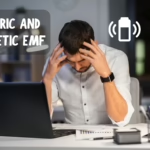Definition and Basic Concept
Contact current refers to the electrical current that flows through a person’s body when they come into physical contact with an object that is electrically charged. It occurs when there is a voltage difference between the object and the ground, creating a potential path for electrical flow through the body. The magnitude of contact current depends on various factors, including the voltage difference, the electrical resistance of the body, and the contact area with the charged object.
Mechanism of Contact Current Flow
The human body can conduct electricity, and when it comes into contact with a charged object, it essentially becomes part of an electrical circuit. The current flows from the object, through the body, and towards the ground (or another object with a different electrical potential). This flow is governed by Ohm’s Law, where the current is directly proportional to the voltage and inversely proportional to the resistance.
Sources of Contact Current
Contact currents can originate from numerous sources in everyday environments. Common sources include electrical appliances, electronic devices, and even plumbing fixtures if there’s a fault in the electrical grounding system. Industrial settings with heavy machinery or electrical installations are also prevalent sources. Another significant source is the stray currents in environments with extensive electrical infrastructure, like urban areas or near power lines.

Want to Slash Your EMF Health Risks?
Want to Slash Your EMF Health Risks?
Good! Learn the one small change you should make right now.
Implications and Health Concerns
The primary concern with contact current is the risk it poses to human health and safety. The severity of the effects depends on the current’s strength, duration, and the path it takes through the body. Low-level contact currents might only cause a mild tingling sensation, but higher levels can lead to discomfort, muscle contractions, burns, or even more severe injuries. There’s also a concern about the potential long-term health effects of chronic exposure to low-level contact currents, although this area requires more scientific research for conclusive understanding.
Safety Standards and Regulations
To mitigate the risks associated with contact currents, various safety standards and regulations have been established. These standards define safe levels of contact current exposure and are enforced in the design and installation of electrical systems and appliances. The guidelines are set by international and national bodies like the International Electrotechnical Commission (IEC) and the National Electrical Code (NEC) in the United States.
Despite the existence of these safety standards, more than a quarter century of research demonstrates that they are insufficient to protect human health.
Measurement and Detection
Measuring contact current involves assessing the electrical potential difference and the current flow when a person contacts an energized object. This is typically done using specialized equipment, such as voltage meters and current detectors, which can accurately measure the relevant electrical properties.
Mitigation Strategies and Best Practices
Mitigation of contact current involves both technical solutions and behavioral practices. On the technical side, proper grounding and bonding of electrical systems are crucial. Using Ground Fault Circuit Interrupters (GFCIs) can also prevent hazardous current flow. Behaviorally, it involves being cautious around electrical devices and systems, especially in wet environments where conductivity is higher.
Public Awareness and Education
Raising public awareness about contact current and its potential risks is essential for prevention and safety. Educational campaigns and resources can inform people about how to recognize sources of contact current and adopt safe practices to minimize their exposure and risk.
Occupational Safety
In occupational settings, especially those involving electrical work or heavy machinery, understanding and mitigating contact current is a critical aspect of workplace safety. Employers are responsible for ensuring that their electrical systems are safe and that employees are trained to recognize and avoid contact current hazards.
Scientific Research and Debate
The field of contact current research is evolving, with ongoing studies investigating its effects on human health. There is particular interest in understanding the impact of long-term exposure to low-level contact currents. The scientific debate also extends to the development of more effective safety standards and mitigation technologies.
Technological Developments and Future Trends
As technology advances, new challenges and considerations emerge in the context of contact current. The proliferation of electronic devices, the increasing complexity of electrical systems, and the integration of smart technologies necessitate continuous updates and improvements in safety standards and mitigation strategies.
Conclusion
In conclusion, contact current represents a significant aspect of electrical safety, encompassing a range of considerations from basic understanding to complex mitigation strategies. It involves the flow of electrical current through the body when in contact with a charged object and can pose risks ranging from mild discomfort to severe health hazards. Addressing these risks requires a combination of technical solutions, regulatory standards, public awareness, and ongoing scientific research. As our interaction with electrical systems and devices becomes more intricate, the importance of understanding, measuring, and mitigating contact current becomes increasingly paramount in ensuring safety in both personal and professional settings.







